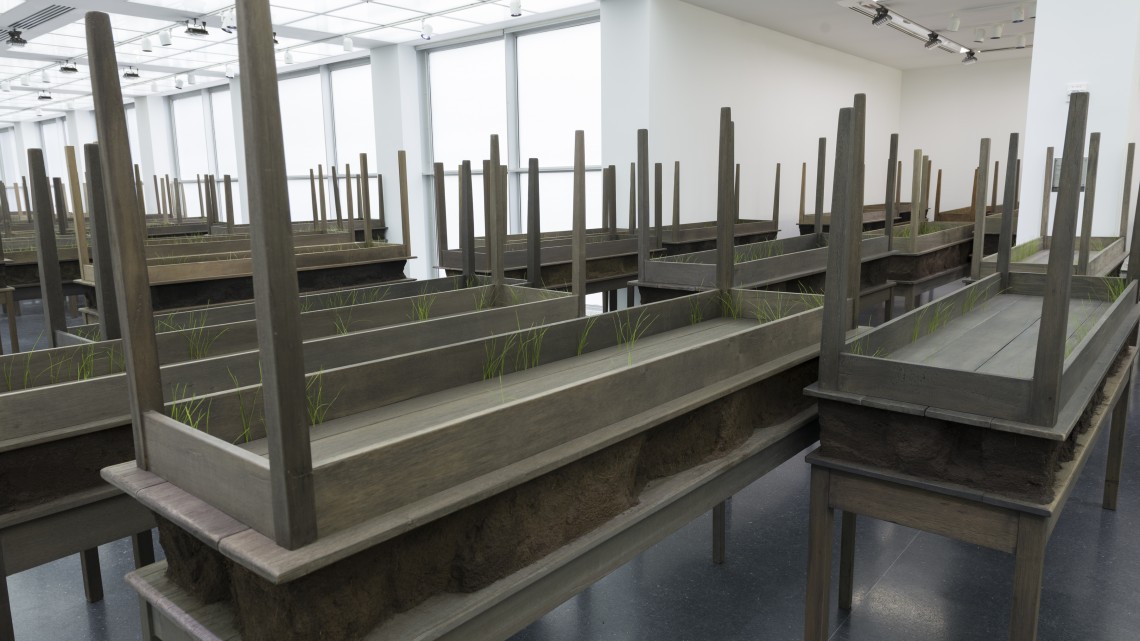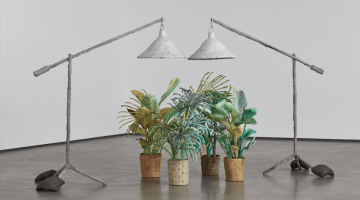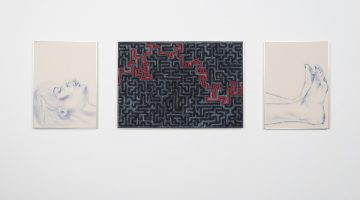Doris Salcedo
Museum of Contemporary Art Chicago
February 21 – May 24, 2015
220 East Chicago Ave Chicago IL 60611
The image most widely associated with the Doris Salcedo show, currently on view at the MCA Chicago, is one that greets visitors upon exiting the elevator or ascending the stairs reaching the fourth floor of the museum. Handmade tables the length of a coffin stand waist-high in the center with a duplicate table turned on its end—often making the entire object the height of a very tall person at their peak—and seem to stretch wall to wall upon first glance. Moving through this installation one must be methodical; it is not clear when the path may abruptly end. Placed in the center of these sandwiched tables is a layer of soil and blades of grass, which are growing through the bottom of the tables turned on their backs. Plegaria Muda (2008-10) translates as “silent prayer” according to the accompanying museum booklet which offers further information in lieu of wall text throughout the exhibition. This particular work was created in reference to Salcedo’s research of gang violence in Los Angeles and mass graves in Colombia, and makes note of a lack of proper remorse for these individual lives due to their socioeconomic standing and resulting from a culture permeated by violence. The majority of the work in this selection from Salcedo’s catalog is installation-based and requires a decent amount of physical maneuvering to receive the full experience.
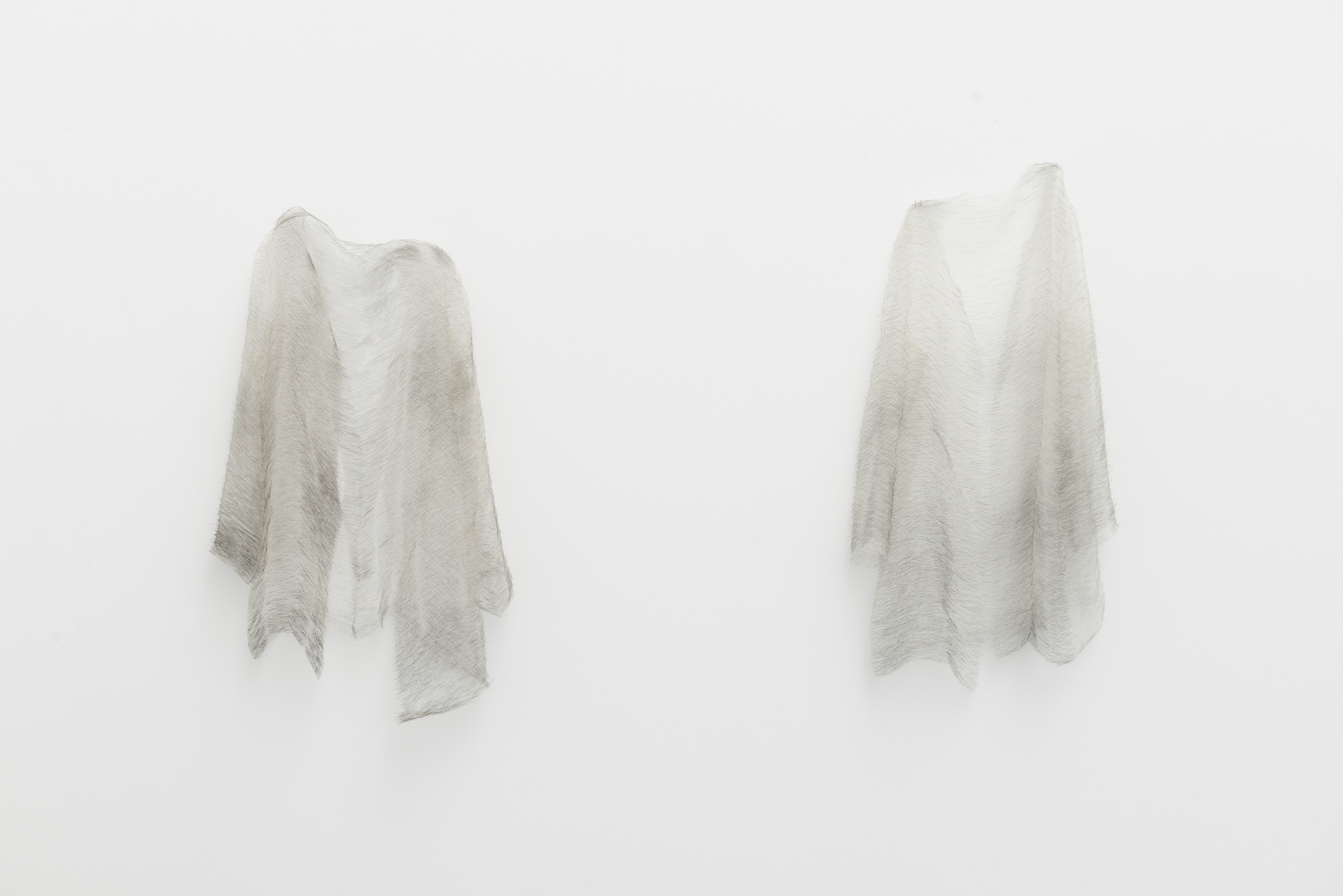
Doris Salcedo, “Disremembered II and III,” 2014. Courtesy of the artist and Alexander and Bonin, New York. Photo: Nathan Keay, © MCA Chicago.
One navigates Plegaria Muda like a labyrinth that forces the visitor to slow before entering the following galleries. In general, Salcedo’s work is both literally and figuratively heavy, dealing in mental health, domestic violence, violence against women, gang violence, and genocide, paired with the use of concrete, rebar, and cumbersome furniture. Two more delicate, but conceptually expansive, works stood out as moments to breath—and then immediately stop breathing once understood. Disremembered (2014) is Salcedo’s newest series and consists of garment tops made of hand-woven raw silk, the entire surface stuck with needles. They look like hairy shirts rather than a porcupine, and each represents a community of lives lost and individuals not mourned due to the circumstances. For example, one of these works is attributed to gang violence in Chicago, each needle standing in for a life lost. This body is polarizing like the effect it mimics. Salcedo draws attention to the public’s inability to provide true empathy, or to mourn an individual because of the circumstances surrounding the death, and therefore these lives become statistics in the larger fabric of society.
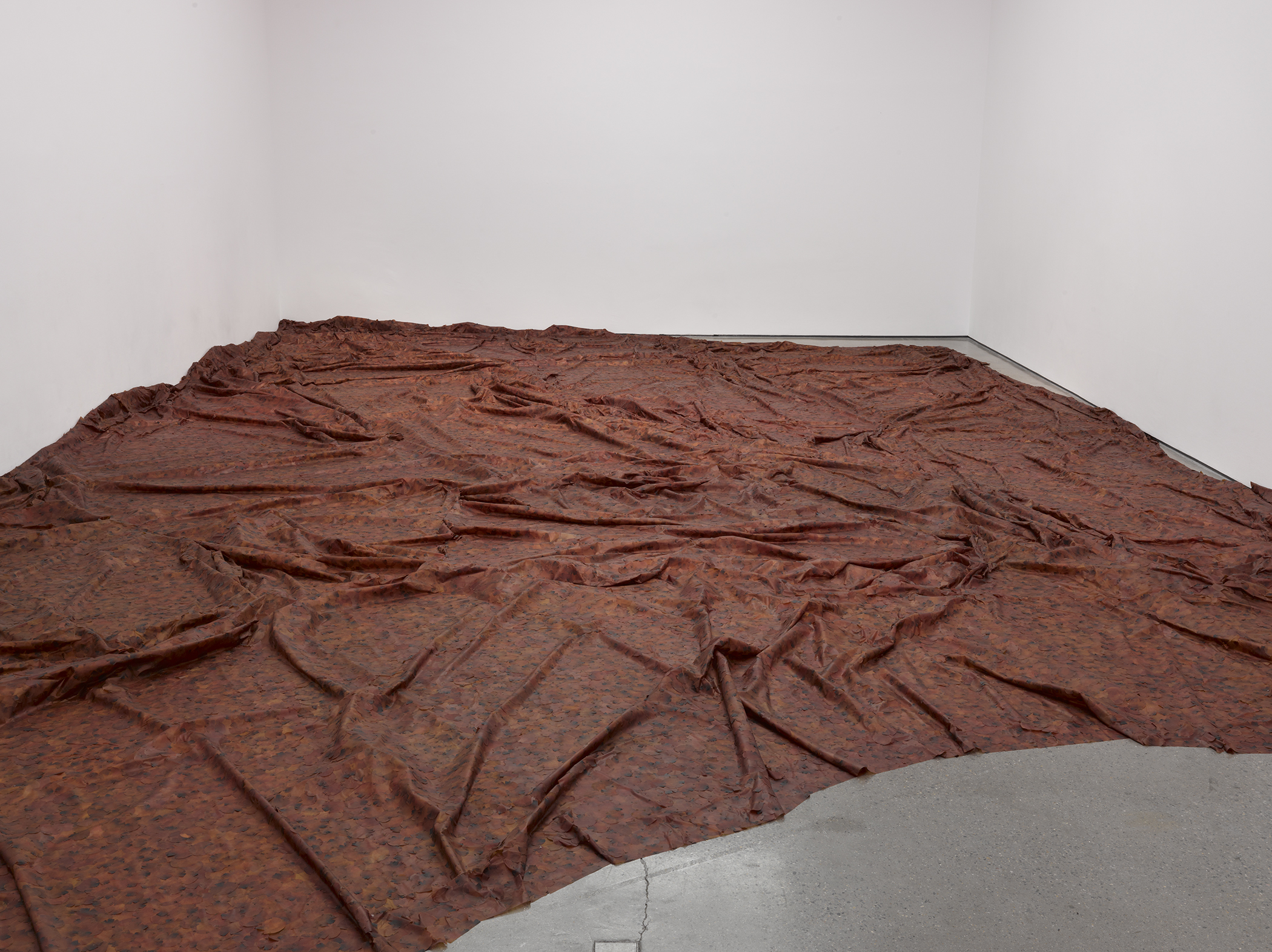
Doris Salcedo, A Flor de Piel, 2011-12. Rose petals and thread. Installation view, White Cube, London, 2012. Photo: Ben Westoby.
Visualizing numbers through multiples is a strong theme in Salcedo’s work; another example being the final work in the exhibition, A Flor de Piel (2014). The back story to this work is complicated—citing a Colombian nurse who had survived a great deal in her life only to be kidnapped and fatally tortured. The presence of the piece, however, is not complicated. When confronted by A Flor de Piel the visitor’s sense of smell is alerted to the leather-looking surface blanketing the floor is natural. The material is the color of freshly fallen leaves, at the moment of death, before the elements cause decomposition. They are rose pedals surgically sutured together to create what Salcedo calls a “shroud,” according to the museum booklet. By inciting an additional sense in this work, smell, and at that, a familiar smell—A Flor de Piel, rouses the body to trigger memory, an experience almost all humans share. In fact, all of the works in this exhibition recount a body—living or dead. Salcedo’s use of scale and resonating material, triggers an embodied cause and effect on the visitor. Negotiating a path in and around these objects forces a viewer to become more aware of their own body, at times imagining the effects these works lay claim to.
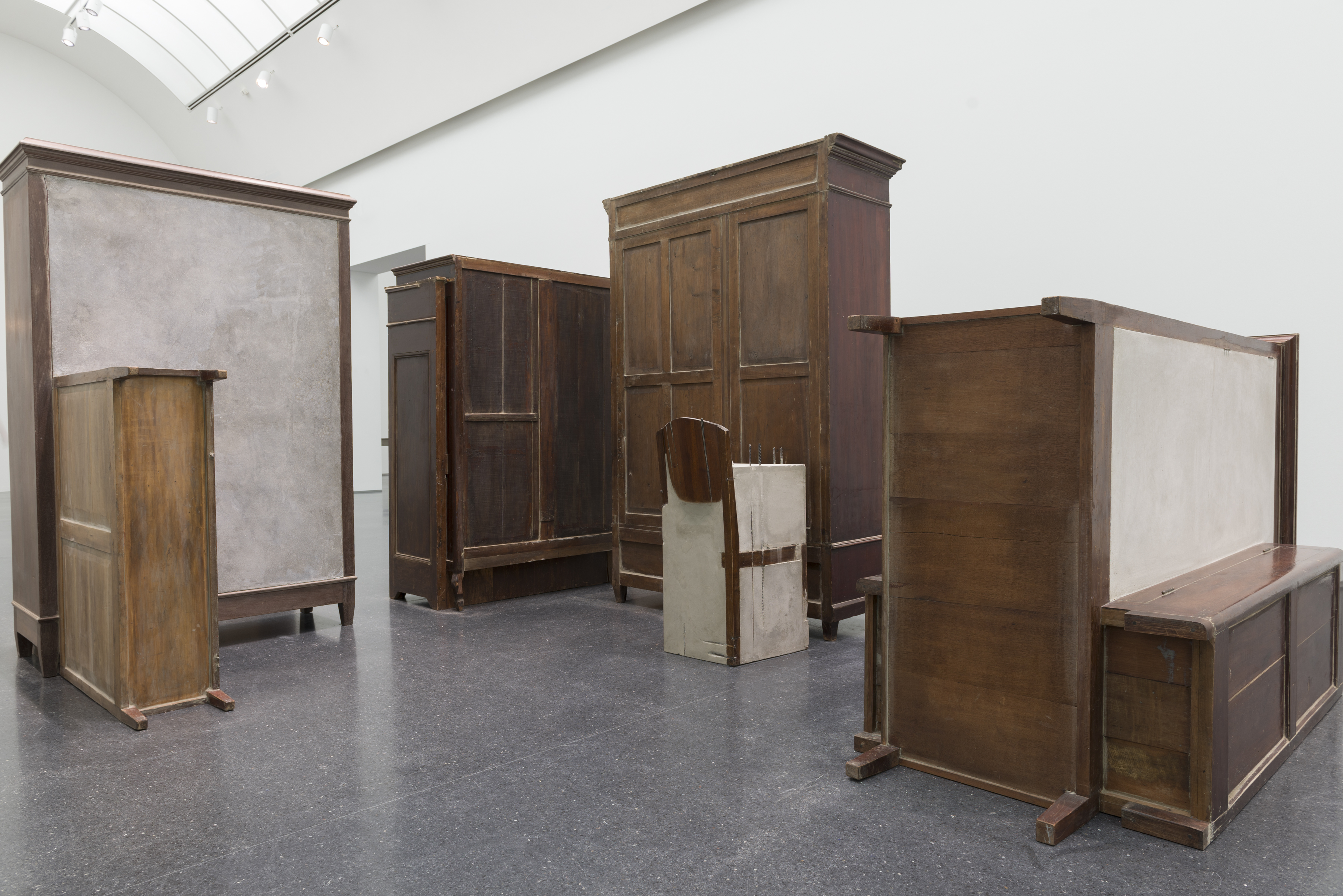
Installation view, Doris Salcedo, MCA Chicago. Photo: Nathan Keay, © MCA Chicago.
To leave the exhibition one must again wind in and out Plegaria Muda. The installation of these large, small, and intense works forces a pace that is slow and poetic. Each room acts as a stanza serving a greater purpose—an overview of the work of a prolific artist. In terms of visitor engagement there are mixed feelings on the inclusion of the booklet designed to offer more information and aid in the experience of the work. If one were to view the entirety of the exhibition as a poem, the written paragraphs about each work could be read as a footnote to be seen or forgotten, depending on preference— a nice reminder that we can, at long last, comprehensively see and not forget the work of Doris Salcedo.
—
(also: Doris Salcedo discussing her work at the Turbine Hall)
